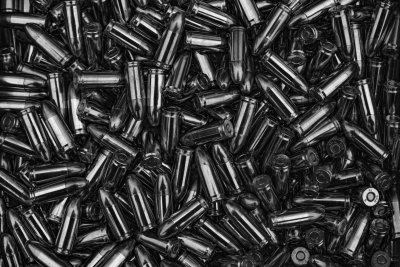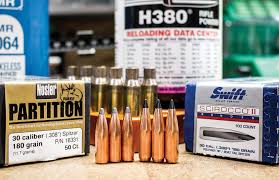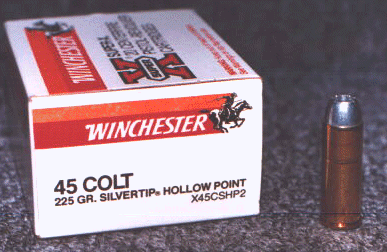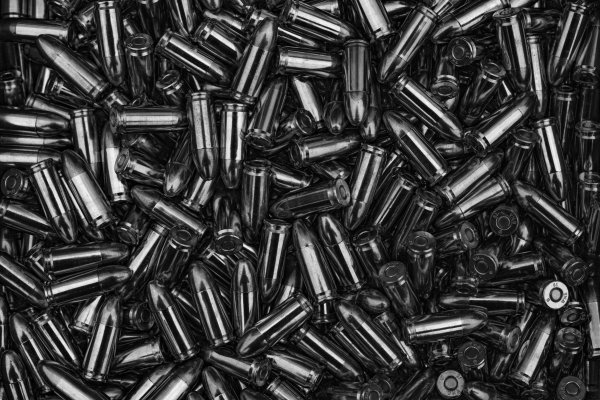1. Clean and Lubricate the cases
The first thing you always need to do is clean and lubricate the empty shell before re-sizing the case (and decapping the old primer). While Tungsten Carbide pistol dies don’t require lubricating, it’s still a good idea. Just a light amount of lube on the pad goes a long way. You can place several cases on the pad and roll them together to lube several at once. You only need a LIGHT film on the cases.
NOTE: OLD STYLE PISTOL DIES ARE DIFFERENT FROM THE NEW STYLE. OLD STYLE RESIZES ONLY ON FIRST STEP, THEN 2ND DECAPS, BELLS MOUTH AND REPRIMES AND FINALLY THE 3RD DIE SEATS THE BULLET AND CRIMPS.
NEW STYLE 1. RESIZES, DECAPS AND REPRIMES, THEN 2. BELLS MOUTH AND FINALLY 3. SEATS BULLET AND CRIMPS. SOME 4 DIE SETS HAVE THE 4TH DIE DO THE CRIMPING, PARTICULARLY A HEAVY ROLL CRIMP.
2. Resize (and decap) cases.
The next step is always re-sizing the cases. Some die sets are only 2 dies and they also de-cap (punch out old primer) at the same time. This 2 die set is most common with rifle sets. The reason for a 3 die set is the first die re-sizes, the second de-caps and puts a slight open bell on the case mouth to allow easy bullet seating later.
3. Decap and re-prime cases.
With the 3 die sets, the next die knocks out the old primer and may put a slight bell on the mouth of the case. This is an adjustment you must carefully make. The pin will always knock out the primer at any setting, but a little more or less of the seating will determine whether or not the case mouth is belled out or not at all. Before removing the case, re-seat a new primer. Most presses have provisions for a tube that automatically feeds a new primer into the lever that seats it in the case. Be careful and seat it slowly to avoid the primer going off. A primer exploding in front of your face could put an eye out. Wear safety glasses during this step.
4. Charge the cases with powder.
After you have primed all the cases, it’s time to put the measured charge in each one. Using a powder measure (see accessories you must have page) that has been accurately calibrated for the load you plan to use, carefully fill each case. A tap on the powder measure will insure all the powder drops into the case. When finished with a block of cases, VISUALLY INSPECT EACH ONE to make sure no cases are empty or got a double filling. Either situation could result in a terrible accident or fatality.
5. Seat the bullet (and crimp).
Finally it’s time to seat the bullets. The last die is always a seating (and crimping) die. On cases like the 30-06 with solid, jacketed bullets, there may be no crimp ring or need to crimp. So even if your die will crimp, you set it out far enough NOT to crimp, and adjust the bullet seating center pin to put the bullet at the depth you want. Start with the bullet out too far, and gradually increase the depth control to get the seating you want, then set the lock ring on the die, to keep it at that depth. For bullets that you DO want to crimp, especially lead bullets or magnum one with a crimp ring, you first seat a bullet at the depth you want (by little increments) then move the seating pin out of the way. Then adjust the depth of the die in the press, small increments until the round goes up just far enough to put the proper crimp on the case to hold the bullet securely. Lock down the die…and then re-adjust the bullet seating pin to be firm on top of the bullet. Now, the bullets will be seated just deep enough as the cartridge reaches the top of the die and is crimped. You are finished.
Discussion: If you have never reloaded ammo before, you should watch someone else go through the steps outlined above. If you are familiar with the process, then these steps are just a clear way to proceed in your reloading process.
With progressive presses, all steps are done as the case rotates around to each successive die. In the Dillon 550-B, the first die, resizes, decaps and reprimes the case. Where the second die would be used, you have the automatic powder measure with its built in case bell tool at the same time it dumps powder into the case. The third step seats the bullet and crimps (with 3 die sets) and with 4 die sets, the last die does the crimping. Then the loaded round is ejected into a box. This method was FIVE times faster for me to load 250 rounds of .38 special on the first try.






